For perfectly cooked ribeye steak, sear it in a hot cast-iron skillet, then place it in the oven. This method will brown the fat and create a good crust on the exterior while keeping the inside tender and juicy.
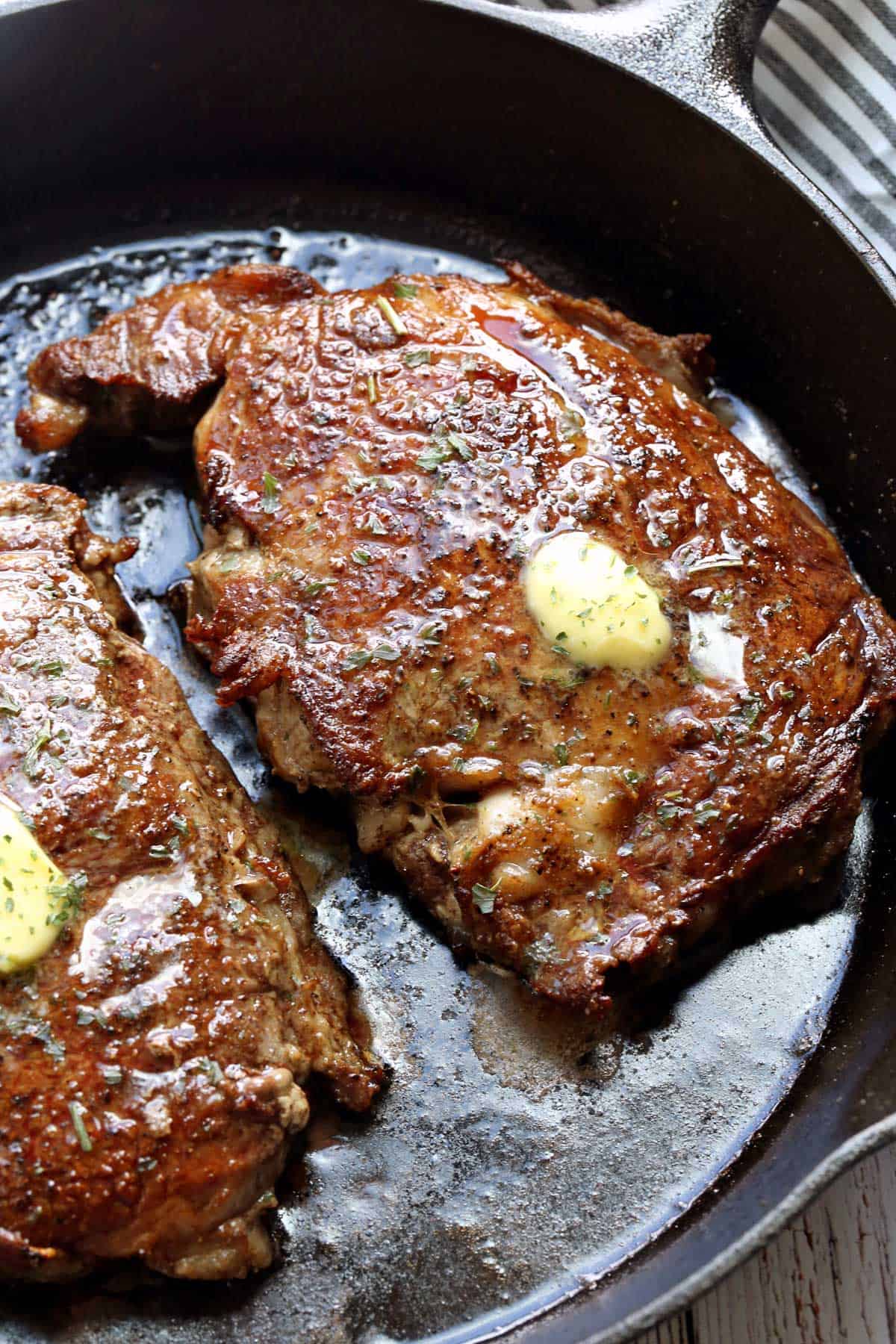
Ribeye steak is tender, flavorful, and well-marbled. Cooking it at home is easy, but you need the right tool. A well-seasoned cast-iron skillet is the only reliable way to create a good sear on a steak. When I use the two-step method of searing and then finishing the steak in the oven, I get steakhouse-level results every time.
Ingredients

See the recipe card for exact measurements. Here are my comments on the ingredients.
- Ribeye steaks: I buy big, 1-pound, 1.5-inch thick steaks. Whenever possible, I go for USDA Prime grade. USDA Choice is acceptable but inferior to Prime. Try to find steaks that are not overly trimmed. The fatty edge is delicious!
- Kosher salt and black pepper: I highly recommend using Diamond Crystal Kosher Salt when cooking steaks. It's delicious, and its coarse grind helps create that nice crust we all look for in a steak.
- Butter: For topping the cooked steaks. This isn't optional. It dramatically enhances the flavor of the steaks and is one of the reasons why steakhouse steaks are so good. They're always finished with butter!
Instructions
The detailed instructions and step-by-step photos are included in the recipe card. Here's a quick overview.
Blot the steaks dry with paper towels and season them with kosher salt and black pepper. Heat a well-seasoned cast-iron skillet over high heat until it's smoking. Add the steaks and cook them for two minutes per side plus 30 seconds on the edges.
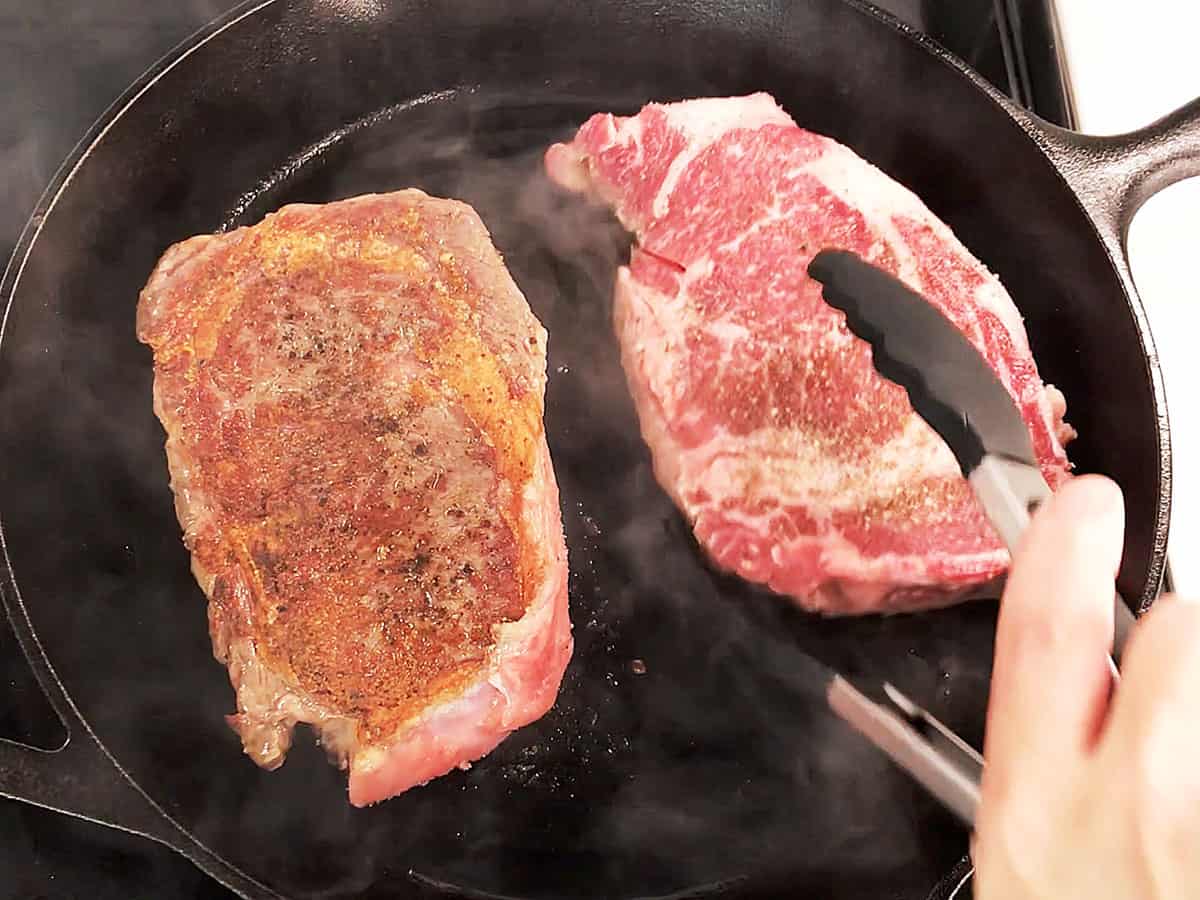
Using oven mitts, transfer the hot skillet to the preheated oven. Leave it there for about 3 minutes for medium-rare steaks and about 5 minutes for medium-done steaks (the level of doneness recommended by the USDA).
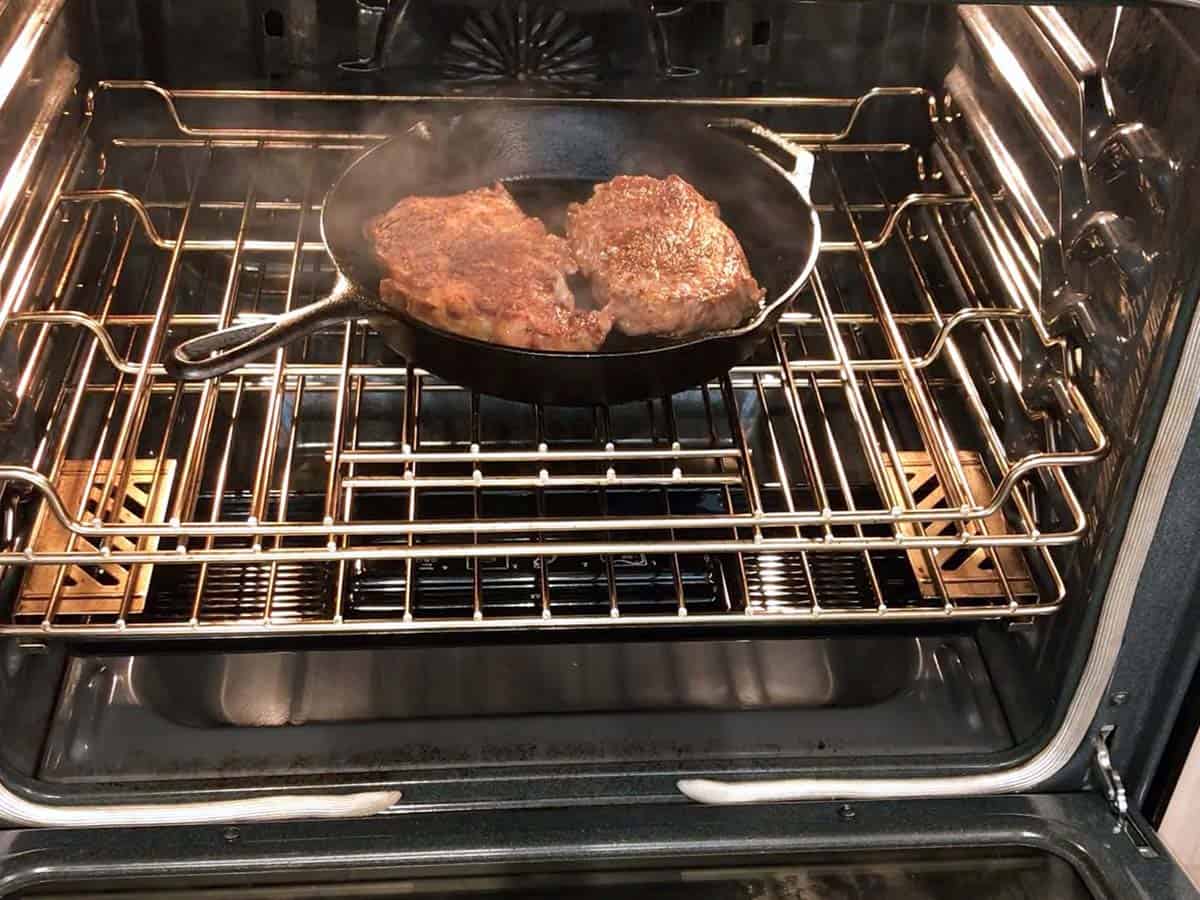
Transfer the steaks to a warm plate and loosely cover them with foil to keep them warm. Let them rest for 5 minutes, then top them with butter and serve.
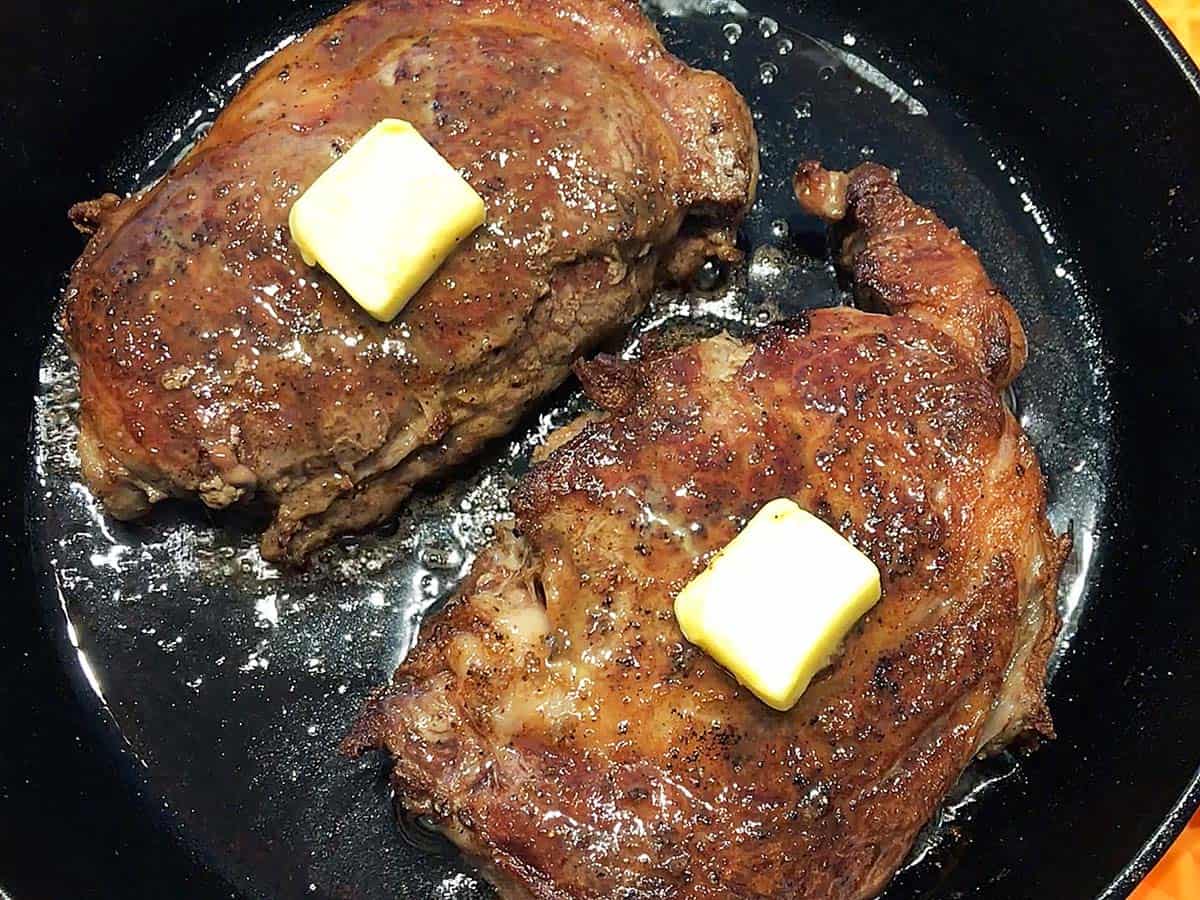
The ribeyes came out amazing! I was always intimidated by cooking steak, especially the expensive cuts, but no more. This technique was a real confidence booster. My daughter almost didn’t believe I cooked it, it was that good. Thanks for sharing!
Mayr
Read more comments
Recipe Tips
- If you prefer your steaks rare or if they are thinner, around 1 inch thick, you can skip the oven and simply pan-fry them for 3 minutes per side, plus 30-60 seconds on the edges. Then check to see if they are done to your liking.
- Try to get USDA prime-grade ribeyes if possible. They are increasingly available in grocery stores. Look at the photo below of two steaks I bought recently - you can easily tell the difference. The Prime steak has beautiful marbling throughout, while the Choice steak is leaner. I cooked both, and my family and I taste-tested them. Both steaks were delicious, but the USDA Prime steak was more tender, juicy, and flavorful. It was the clear winner.
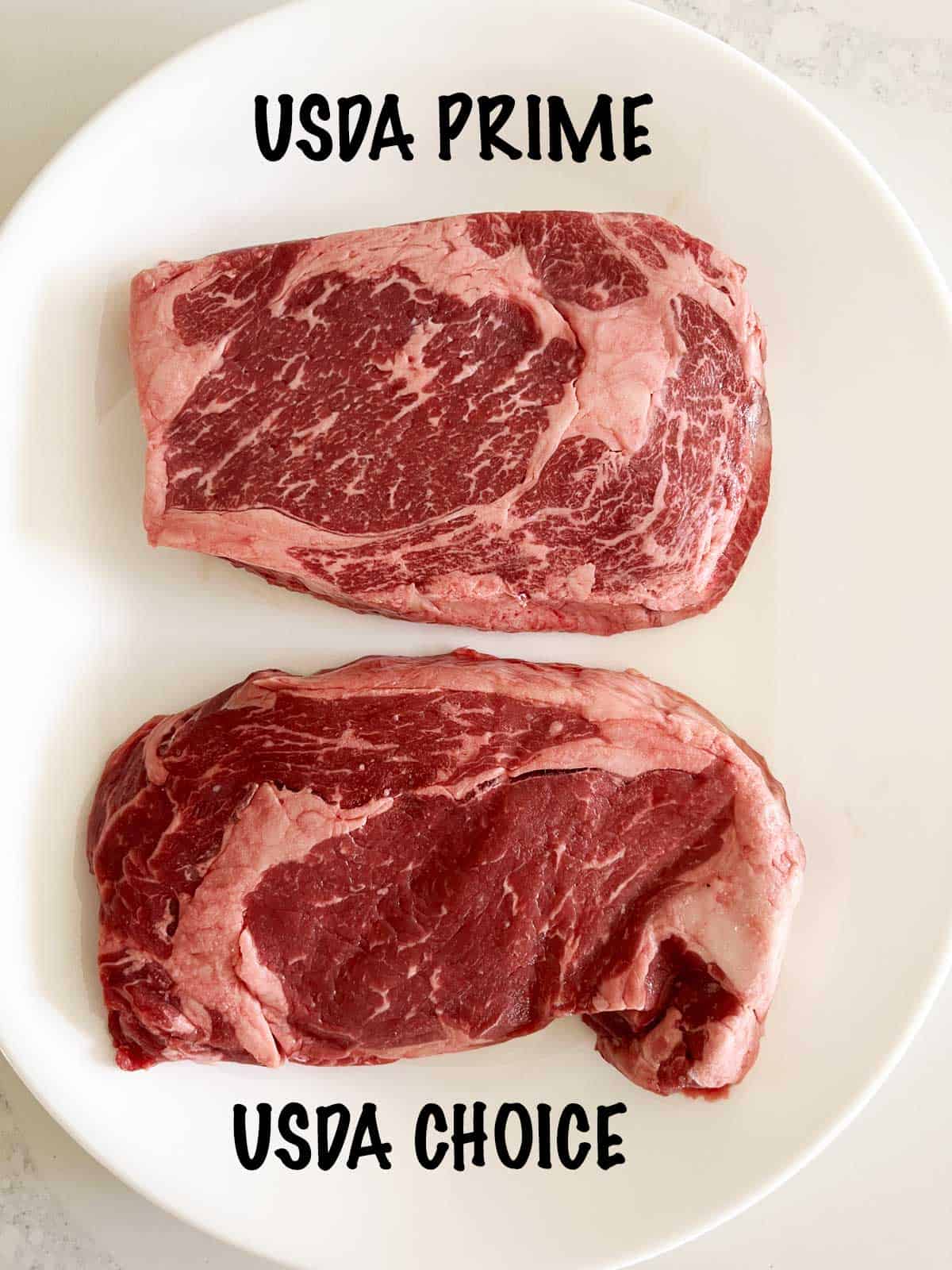
Recipe FAQs
There's no harm in marinating these steaks for an hour or two in the fridge, but it's unnecessary. Ribeye is tender and flavorful. It doesn't require a marinade, which is typically used to tenderize and add flavor to leaner and tougher cuts such as London broil, skirt steak, and flank steak.
You can use bone-in or boneless steaks. While bone-in steaks are juicier and more flavorful, especially around the bone, I prefer boneless steaks because they are easier to eat, and I don't get frustrated with tasty bits of meat left stuck to the bone.
Since I like my steaks medium-rare, I prefer them to be refrigerator-cold when I cook them. This enables me to give them a good sear while keeping their inside red and warm. There is less risk of overcooking them.
Reheated steak isn't very good. So, while the leftovers can be kept in the fridge in an airtight container for up to 4 days, it's best to cook only as much as you can finish immediately. If you end up with leftovers, try them cold - they taste like thick, fatty slices of cold roast beef. If you must reheat them, do so gently in the microwave, covered, at 50% power.
Serving Suggestions
Ribeye steak is big and fatty, so I like to serve it with fresh and simple side dishes like any of the following:
While creamed spinach is a classic steakhouse side dish, I feel it's too rich for such a fatty steak, so I prefer sautéed spinach. Another classic steakhouse side dish that I do enjoy with ribeyes is sautéed mushrooms.
Recipe Card
Juicy Ribeye Steak
Video
Ingredients
- 2 ribeye steaks - 1 pound each, 1.5-inch thick, preferably USDA Prime
- 2 teaspoons Diamond Crystal kosher salt - or 1 teaspoon of any other salt, including Morton kosher salt
- ½ teaspoon black pepper - freshly ground
- 2 tablespoons butter
Instructions
- Preheat the oven to 500°F. Blot the steaks dry with paper towels. Keeping their surface dry will help create a good crust.

- Season the steaks on both sides and the fatty edge with kosher salt and black pepper.
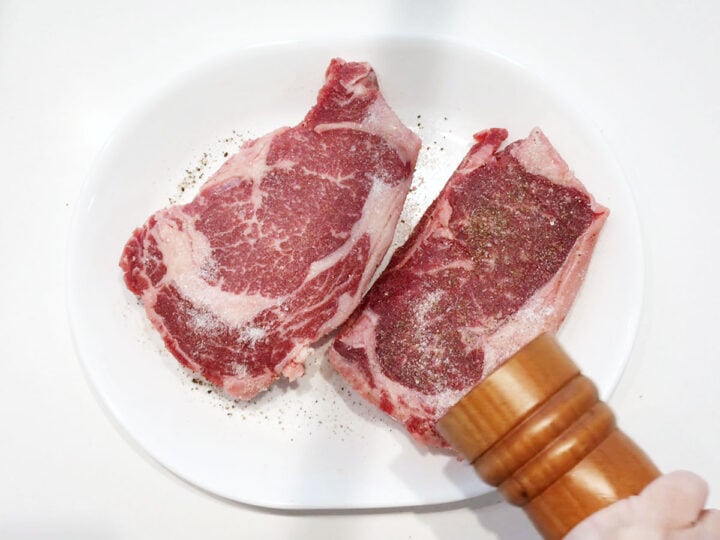
- Heat a well-seasoned cast-iron skillet over high heat until it's smoking. If the skillet is well-seasoned, there's no need to add any oil.
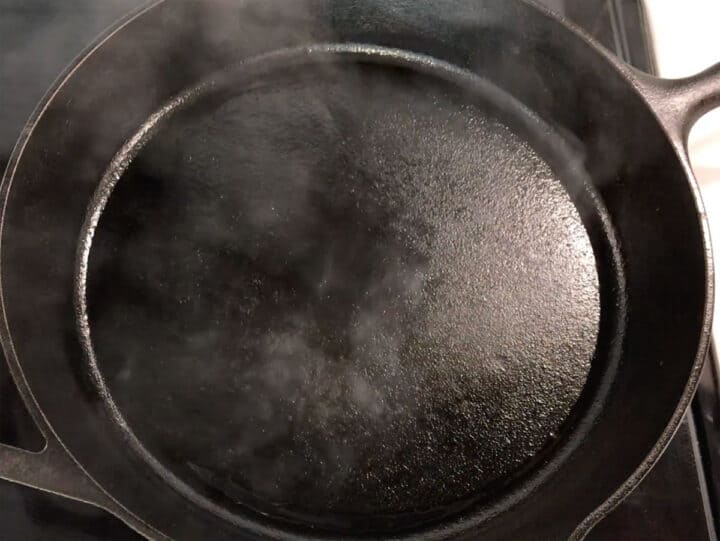
- Add the steaks to the skillet and cook them for 2 minutes per side. If the skillet gets overheated, lower the heat to medium-high, but generally speaking, you want it super-hot.
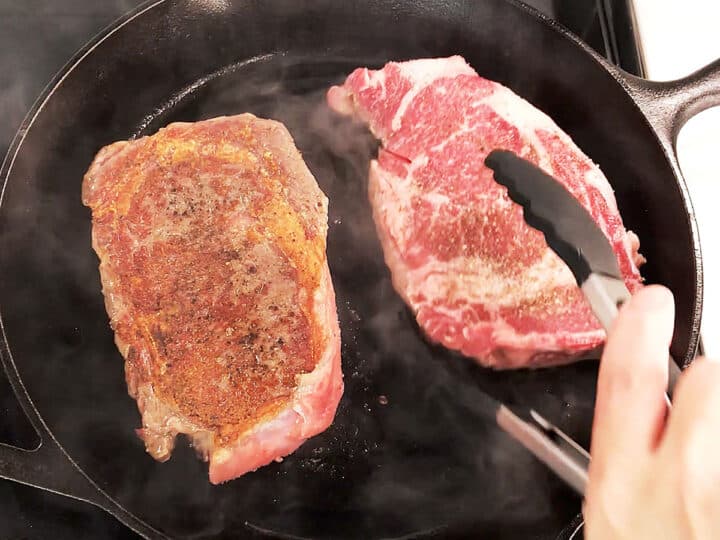
- Cook the steaks' edges for about 30 seconds per edge.
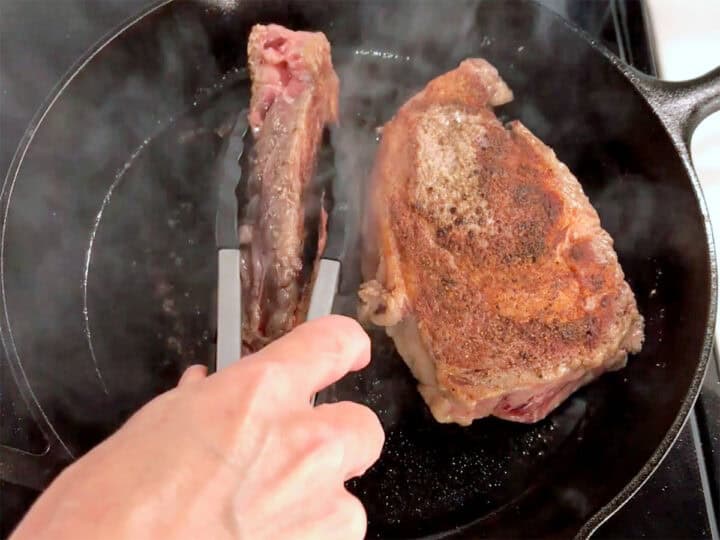
- Very carefully, using oven mitts, transfer the hot skillet to the preheated oven. Leave it there for about 3 minutes for medium-rare steaks or 5 minutes for medium-done steaks.
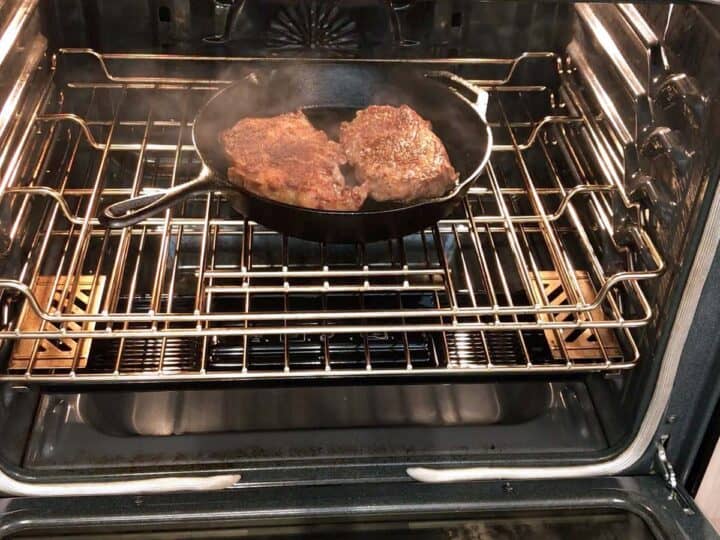
- Transfer the steaks to a warm plate and loosely cover them with foil to keep them warm. Let them rest for 5 minutes, then top them with butter and serve.
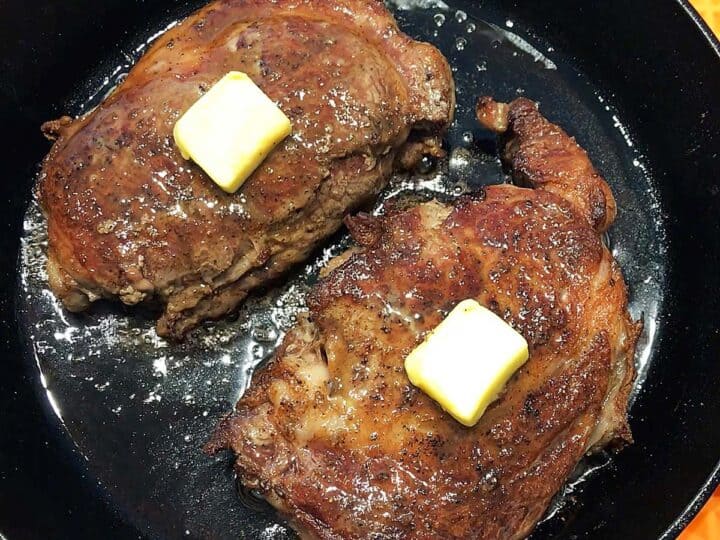
Notes
- If you have a smoke alarm near your kitchen, open your kitchen windows and run your range hood fan.
- You could remove the steaks from the fridge an hour before cooking them to bring them to room temperature. But since I like my steaks medium-rare, I prefer them to be refrigerator-cold. This enables me to give them a good sear while keeping their inside red and warm. There's less of a risk of overcooking them this way.
- If you like your steaks rare or if they are thinner - around 1 inch thick - you can skip the oven and simply pan-fry them for 3 minutes per side plus 30-60 seconds on the edges.
- The cook times suggested here are a guideline. Many variables can affect how long you'll need to cook the steak, including your stove (electric stoves get hotter than gas ones, for example), the skillet you use, your steak's initial temperature, and its thickness.
- The USDA recommends cooking steaks to medium.
- The nutrition information is approximate. To lower the sodium content to around 886 milligrams per serving, use just one teaspoon of Diamond Crystal Kosher Salt or ½ teaspoon of any other salt.
- Leftovers: Reheated steak isn't very good. So while the leftovers can be kept in the fridge, in an airtight container, for up to 4 days, it's best to only cook as much as you can finish immediately. If you end up with leftovers, try them cold - they're surprisingly good (like thick, fatty slices of cold roast beef). If you must reheat them, do so gently in the microwave, covered, at 50% power.
Nutrition per Serving
Save this Recipe!
We will also add you to our weekly newsletter. Unsubscribe anytime. See healthyrecipesblogs.com/privacy/ to learn how we use your email.
Disclaimers
Most recipes are low-carb and gluten-free, but some are not. Recommended and linked products are not guaranteed to be gluten-free. Nutrition info is approximate. Please verify it independently. The carb count excludes non-nutritive sweeteners. Please read these Terms of Use before using any of my recipes.

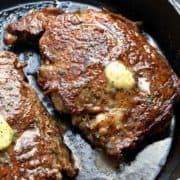
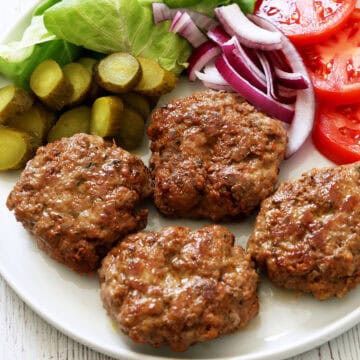
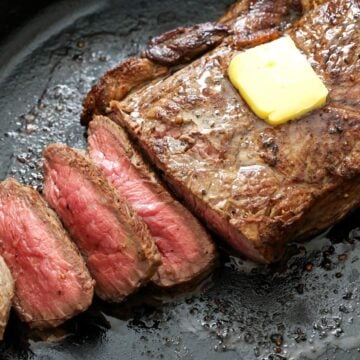

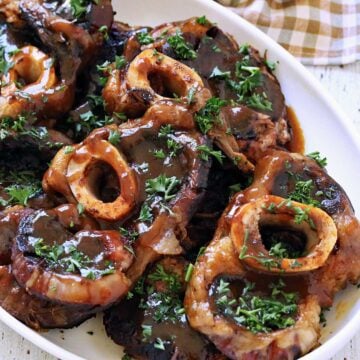
Travis Redmon says
Top notch recipe. The butter melted on top while the steaks rest takes these to another level. Only way I’ll ever cook steaks in the future
Vered DeLeeuw says
Thank you so much, Travis! I'm glad you enjoyed your steak.
Tiana says
Best steak ever! I had a steak marinating in allegro & a sprig of rosemary overnight ... patted it down & added s&p... found your cooking instructions ... added a little butter on top while resting & DAMN! Best cooked steak I've ever had. Thank you!
Vered DeLeeuw says
You're very welcome, Tiana! I'm so glad you enjoyed your steak. Thank you for taking the time to write a review.
Kelsey says
Easy and EXCELLENT! I'm always worried I'll over cook my steaks. This Skillet to Oven recipe was not only a breeze to make, it was absolutely delicious and cooked perfectly. I highly recommend this one!!
Vered DeLeeuw says
I'm so glad you enjoyed this recipe, Kelsey! Thank you very much for the review.